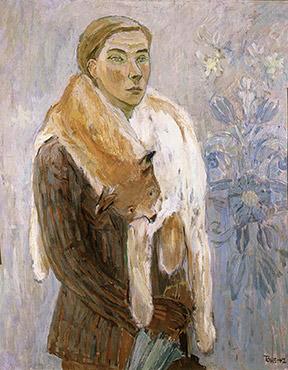
Simon has been telling me for years how wonderful Tove Jansson’s writing is, but having only heard of her through the Moomin cartoons, I couldn’t really imagine her in the context of being a writer for adults, and so didn’t bother finding out more. However, a few weeks ago, I was tasked with starting to put together a curriculum for the International Baccaleureate English Literature course at school next year, and with a huge part of the course being a requirement to study literature in translation, I was stumped. Beyond the major Russian novelists, I’ve never really been into reading much fiction in translation, largely because I never feel like I’m actually reading the real thing. Having to find four books in translation to teach therefore presented quite the challenge. That’s when I remembered Simon’s love of Jansson’s The Summer Book, and as luck would have it, found it in a charity shop the very day I decided to go and buy some books in translation to inspire me. Moomins firmly in mind, I had no idea what to expect from Jansson’s writing, and was surprised to find myself instantly enchanted.
The Summer Book is a series of vignettes of life on a tiny Finnish island (so tiny it only takes 4 minutes to walk around the whole thing!), where a girl, Sophia, goes every summer with her grandmother and father. The narrative isn’t linear, and the vignettes exist out of any real sense of time; the reader is invited into glimpses of various summers over a number of years, and time ceases to matter, much like it does during the long, light Finnish summers where each day slips softly into the next, with little to differentiate one from the other. This slightly dream-like structure allows the anchor of the novel to be the characters, who remain consistent; the relationship between the curious, demanding and endearing Sophia and her creative, playful and yet increasingly vulnerable grandmother, is beautifully and often hilariously drawn. Sophia’s brutal honesty and frustrated questioning are brilliant depictions of the unselfconscious selfishness of childhood, and the gradual narrowing of the grandmother’s focus to the island and the minutiae of its natural world as she feels herself starting to slip away from life is movingly and powerfully drawn. Sophia and Grandmother, at opposite ends of the poles of life, are brought together every summer by the island, and their lives intertwine as they explore its ever changing environment together. There is always something to be discovered, a new custom to understand, a a new friend to be made, a solution to be found to a problem. From these moments, Jansson creates pockets of pure delight, transporting the reader to this tiny world where life both stands still and yet is charged with incident. I was utterly charmed by its magic.
So charmed was I, that I immediately set off to Foyles to buy this biography, that has also been translated into English, and is absolutely fascinating. I had no idea Jansson was such an accomplished artist, and had started her career as a decorative painter before the Moomins took over her life unexpectedly. She had a fascinating life, filled with adventure and intrigue, and she challenged conventions and forged her own path at a time when to do so was truly revolutionary, and took true courage. Born in Finland to a Swedish speaking family (hence why Jansson wrote in Swedish, and not Finnish), Jansson’s parents were both prominent artists and so she was drawing from a very young age. Encouraged in her artistic endeavours, she studied at the major Scandinavian art schools and worked as a painter, particularly on large decorative murals, many of which can still be seen in Helsinki, as well as portraits and landscapes, many of which are reproduced in the book and are a delight to behold. The war years were incredibly difficult for her, as were her twenties in general, with several doomed love affairs causing her a great deal of emotional anguish. The discovery of her love for women in her thirties freed her emotionally and creatively, and from this point onwards came the work that would make her name, though she would grow to hate the way the Moomin books and comics took over everything else, leading to her retreat to the island home she writes about so beautifully in The Summer Book. This novel was, according to her biographer, a response to the grief she felt in the aftermath of her beloved mother’s death, the grandmother in the book being her mother, and the little girl her niece. Understanding more about Jansson’s life and influences was absolutely fascinating, and unlocked so much more meaning for me in The Summer Book. She was such a talented, interesting, vibrant woman, and I already can’t wait to read more of her adult work. If you’ve never tried Jansson’s adult writing, I can’t recommend The Summer Book highly enough, and it’s perfect for a lazy summer afternoon’s reading!
Advertisements